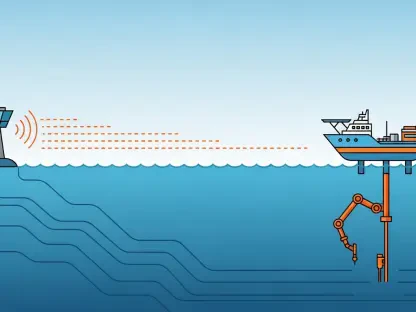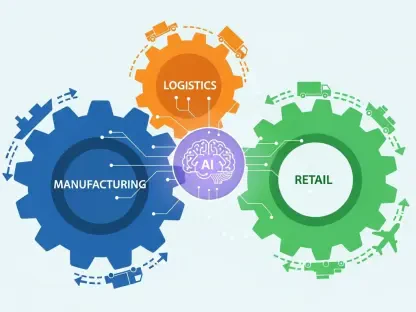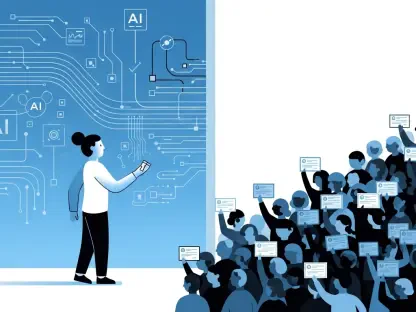What if a chess opponent could understand your hesitation, adapt to your skill level, and even resign when the game is lost, just like a human player? Enter Allie, an AI chess bot that redefines the digital chessboard by emulating human behavior rather than crushing opponents with superhuman precision. Trained on a staggering 91 million games from Lichess, this innovative bot offers a glimpse into a new era of AI—one that prioritizes relatability over raw power. This isn’t just about chess; it’s about crafting technology that feels like a friend rather than a foe.
The significance of this development lies in its potential to bridge the gap between cold, calculating machines and the nuanced, often imperfect nature of human decision-making. For too long, chess engines like Stockfish have dominated players with strategies far beyond human comprehension, leaving casual enthusiasts frustrated. Allie changes the game by making chess accessible and engaging for everyone, from novices to seasoned players. Its creation signals a broader shift in AI design, focusing on tools that complement human abilities, with implications reaching far beyond the 64 squares of a chessboard.
A Chess Companion Like No Other
Allie isn’t the typical chess engine designed to outsmart at every turn. Instead, it mirrors the way humans play—pausing to think during tricky moves, adapting its strength to match an opponent’s skill, and even conceding when defeat is inevitable. This human-like approach stems from a massive training dataset of real player games on Lichess, allowing the bot to absorb patterns of human thought rather than relying solely on brute-force calculations. For many, playing against Allie feels like sparring with a thoughtful peer rather than battling an emotionless algorithm.
This unique design tackles a persistent issue in digital chess: the alienation felt by beginners or casual players facing unbeatable machines. Traditional engines often execute flawless moves with no regard for the user’s experience, turning a game of strategy into a lesson in futility. By contrast, Allie’s ability to scale its difficulty and mimic human pacing creates an environment where learning and enjoyment take center stage, making chess more approachable than ever before.
The Need for Human-Centric AI
Chess has served as a proving ground for AI since the days of Deep Blue, but the focus has often been on achieving dominance rather than fostering connection. Many players find themselves disheartened by engines that prioritize winning over engagement, revealing a critical need for AI that resonates on a human level. Allie addresses this by offering a playing experience that feels personal, reflecting a growing demand for technology that supports rather than overshadows its users.
Beyond the realm of chess, this shift toward human-compatible AI holds profound implications. In fields like education, where personalized learning tools could adapt to a student’s pace, or therapy, where empathetic responses are vital, such innovations could transform interactions. The development of Allie underscores a pivotal trend: technology must evolve to understand human nuances if it is to truly enhance daily life.
Unpacking the Technology Behind the Bot
Allie’s innovation begins with its unconventional training method, drawing from 91 million Lichess game transcripts using techniques similar to those behind large language models. This approach enabled the bot to learn not just optimal moves, but the rhythm and reasoning of human players, from strategic decisions to moments of doubt. Unlike traditional engines that refine themselves through self-play, Allie’s foundation is built on real-world human behavior, setting it apart in the AI chess landscape.
Another standout feature is its adaptability, as the bot adjusts its playstyle to suit opponents of varying expertise. In challenging positions, it deliberately takes time to “think,” mimicking human contemplation, and in lost causes, it resigns rather than dragging out the inevitable. Since its deployment as an open-source project on Lichess, Allie has played nearly 10,000 games, providing a live platform for testing and refining human-AI interaction. Such features hint at future applications, where similar AI could support complex decision-making in diverse settings.
Insights from the Creators
Yiming Zhang, a Ph.D. student at Carnegie Mellon University, spearheaded Allie’s creation out of a personal frustration with unforgiving chess bots. “The goal was to build an opponent that feels natural, one that doesn’t just overpower you without context,” Zhang explained. His vision was to craft a tool that serves as a partner in learning, reflecting the struggles and triumphs of human players rather than merely showcasing computational might.
Zhang’s advisors, Daphne Ippolito and Daniel Fried, share this perspective, highlighting the strength of blending traditional AI search methods with human behavior modeling. Fried emphasized, “This hybrid approach creates a synergy that outperforms standalone techniques, opening new doors for interactive AI.” Their collective work, presented at a major conference this year, reflects a consensus among researchers that prioritizing human-centric design can revolutionize how technology integrates into everyday experiences.
Experiencing AI with a Human Touch
Engaging with Allie offers a unique opportunity to explore AI that aligns with human instincts, especially for chess players eager to test their skills against a relatable opponent. On Lichess, anyone can challenge the bot and observe its human-like tendencies, such as deliberating over complex moves or scaling difficulty to match the player’s level. This interaction provides not just a game, but a chance to understand how AI can enhance learning through empathy and adaptation.
Beyond individual play, Allie’s open-source nature invites community involvement to shape its evolution. Users are encouraged to share insights on Lichess forums, contributing to refinements that make the bot even more intuitive. This collaborative spirit extends to broader curiosity about human-like AI, prompting reflection on how such technology might improve tools in personal and professional spheres, from virtual tutors to supportive digital companions.
Looking back, Allie’s journey marked a turning point in how AI was perceived in recreational spaces like chess. Its ability to emulate human play through a vast dataset of games reshaped expectations, proving that technology could prioritize connection over conquest. As discussions around human-centric design gained traction, the path forward became clear: stakeholders needed to invest in AI that understands human needs, paving the way for innovations from 2025 onward. Exploring platforms like Lichess to engage with such tools remained a vital step, ensuring that future advancements continued to reflect the balance between capability and relatability.









